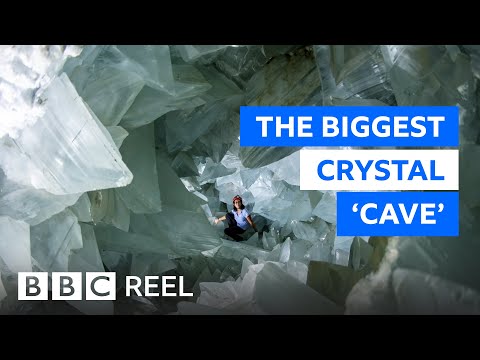
Deep beneath the rugged landscapes of Naica, Chihuahua in Mexico, lies a hidden natural wonder that seems more akin to a fantastical movie set than anything typically found on Earth. Known simply as the Cave of Crystals or “Cueva de los Cristales,” this mesmerizing location is home to some of the largest natural crystals ever discovered. Featured prominently in a BBC Reel documentary, this cave offers a stunning visual spectacle and an intriguing geological story that has captivated scientists and adventurers alike.
### The Discovery
The Cave of Crystals was accidentally discovered in 2000 by miners working for Industrias Peñoles, Mexico’s largest lead producer. As they drilled through the Naica mine, primarily to extract lead and silver, they stumbled upon an underground chamber that hosted gigantic selenite crystals, some measuring as long as 12 meters (nearly 40 feet) and weighing over 55 tons.
### Geological Marvel
The immense size of these crystals can be attributed to the unique geological conditions present within the cave. The chamber is located above an underground magma chamber that lies approximately three miles below the surface. This proximity to magma raises temperatures in the cave to extreme levels—often up to 58 degrees Celsius (136 degrees Fahrenheit), coupled with 90-100 percent humidity. These harsh conditions have created a perfect environment for selenite crystals to grow to unparalleled sizes.
Scientists believe that these crystals formed over a span of at least half a million years in mineral-rich water that remained at a stable temperature, saturated with sulfide ions. Sudden changes in temperature caused by mining activities are thought to disrupt this stability, leading many researchers and conservationists to worry about preserving this natural wonder.
### Scientific Insights
The study of this crystal cave has provided valuable insights into microbial life’s endurance in extreme environments and contributed significantly toward understanding how crystal formations develop under such conditions. Researchers have discovered ancient bacteria trapped within fluid inclusions inside the crystal structures, possibly offering clues about life forms thriving in other inhospitable environments like Mars.
### Conservation Efforts
The extreme environment inside the Cave of Crystals makes it inaccessible for prolonged human exploration without specialized suits and equipment. However, its fame has brought it under threat from potential vandalism or unregulated tourism invasion once mining operations cease. Recognizing this risk, various scientific bodies and Mexican authorities are discussing ways to preserve it as a protected site.
### Beyond Naica
While Naica’s cave is undoubtedly one of Earth’s most fascinating geological finds due to its giant crystals, it opens up interest in other similar caves around the world. Some caves might not house large crystals but feature different minerals or support unique ecosystems, contributing significantly towards our understanding of geological diversity and biospheres.
### Conclusion
BBC Reel’s spotlight on the Cave of Crystals has not only brought well-deserved attention to this extraordinary site but has also highlighted important discussions around preservation and scientific research associated with natural wonders worldwide. As we continue exploring these remarkable environments, we tread lightly—balancing our curiosity with our responsibility towards conservation—to ensure these wonders endure for generations.
